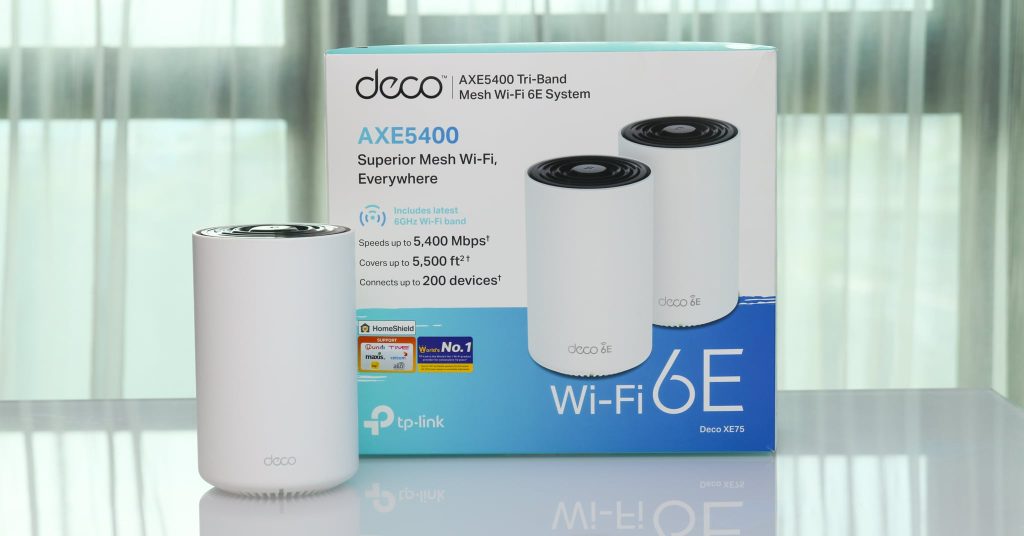
If you are looking for a really fast mesh Wi-Fi system, the new Deco XE75 from TP-Link with Wi-Fi 6E technology is worth a look. It’s finally available in Malaysia at a retail price of RM1499 (~$320 USD) for the twin pack model with 3 years of product warranty.
Wi-Fi 6E introduced the new 6GHz band which is a great addition considering how congested the 5GHz band has gotten over the years. Network quality in the 5GHz band is not as good as before especially at a high density environment such as an apartment building or condominium.
This is where the Wi-Fi 6E with the new 6GHz band is looking to solve. With a wider spectrum and less devices occupying it at the moment, there will be minimal interference or congestion. This means the Wi-Fi network will be faster, more stable and more consistent.
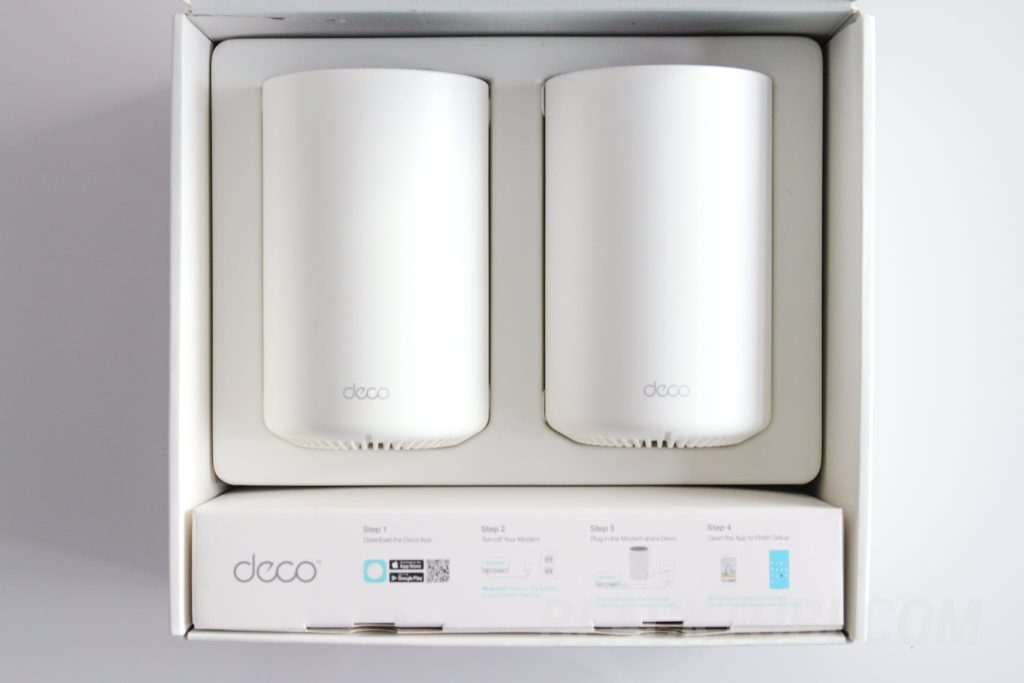
Now, the Deco XE75 is a Tri-Band Mesh Wi-Fi 6E AXE5400 System. This means it actually broadcast a Wi-Fi network in all 3 bands so all your devices even from 10 years ago will be compatible. However, TP-Link designated the 6GHz band as the dedicated backhaul for the mesh WiFi network.
By using the 6GHz band as the wireless backhaul, the whole system would be able to enjoy a super fast network link between the main unit and mesh node. This would enable devices connected to the mesh node to have a much faster Wi-Fi speed compared to other conventional Wi-Fi 6 system in the market.
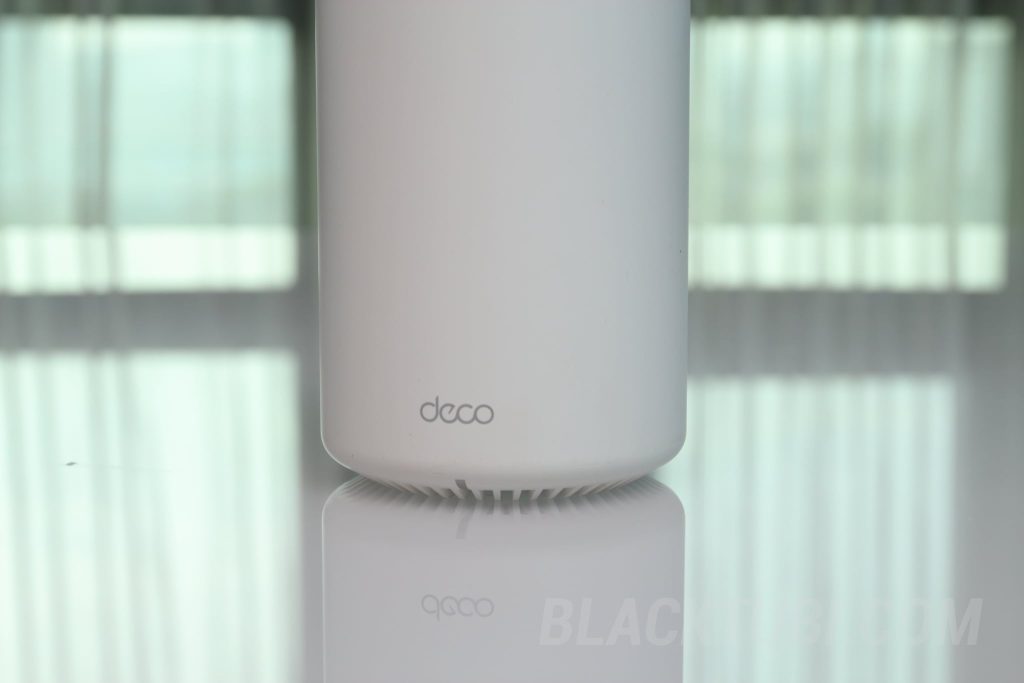
The minimalistic design of the Deco XE75 lets it to blend into most modern interior design easily. It actually reminds me of MUJI a lot. You’ll want to place the Deco XE75 somewhere visible to ensure it has good signal reception.
Hardware and Specs
Like the Archer AXE75, the Deco XE75 is powered by a Broadcom 1.7GHz Quad-Core CPU coupled with 512MB RAM. That’s actually slightly faster than the CPU in the current flagship model, Deco X90 which we reviewed previously. TP-Link claims the system can support up to 200+ connected Wi-Fi devices.
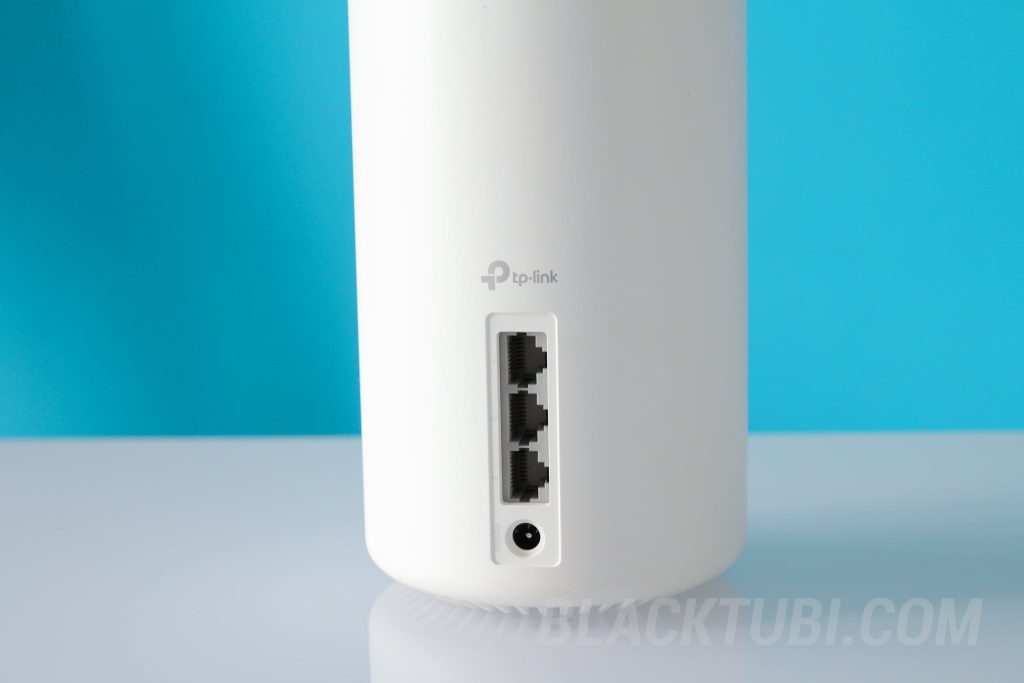
TP-Link also added another Gigabit Ethernet LAN port to this product resulting in a total of 3 Gigabit Ethernet ports on each product. Unfortunately, the Deco XE75 does not come with 2.5G WAN/LAN port, unlike the more expensive Deco X90 model.
Mesh Performance Test
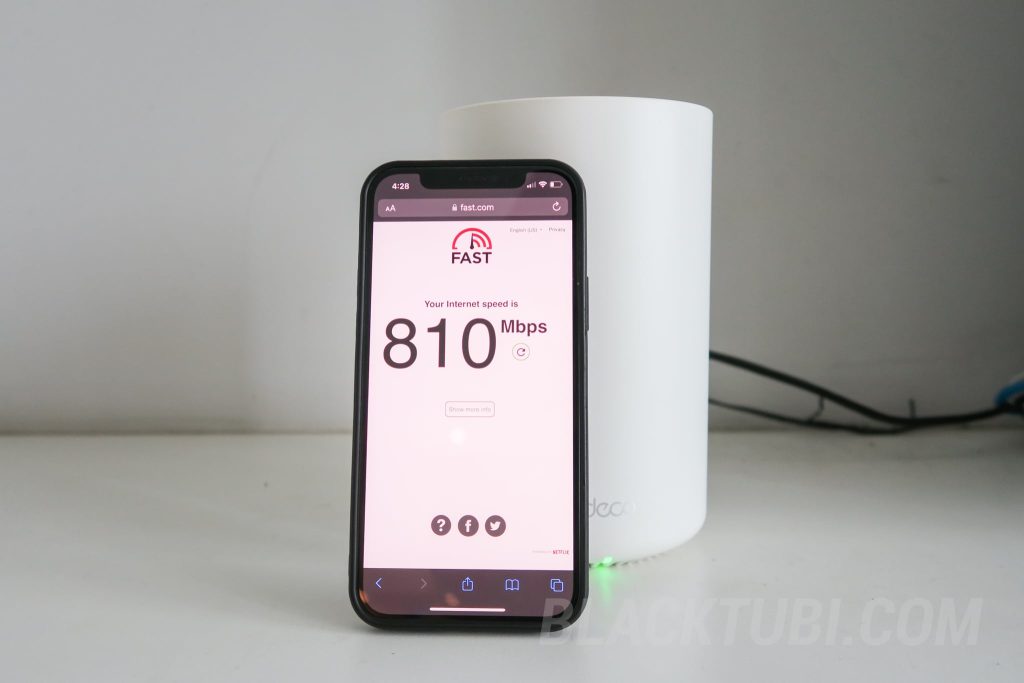
When testing the speed with my iPhone 13 on short distance, the Deco XE75 easily provide speed over 800Mbps with my Gigabit Internet connection. Not a surprise here as all Wi-Fi 6 products should deliver speed over 800Mbps at short distance.
The Deco XE75 is significantly faster than TP-Link’s own flagship Deco X90 when testing it at multiple points in my home. That is a huge surprise as the Deco X90 actually comes with 20% more backhaul capacity. It shows that Wi-Fi 6E can provide more usable speed thanks to a cleaner signal at 6GHz band.
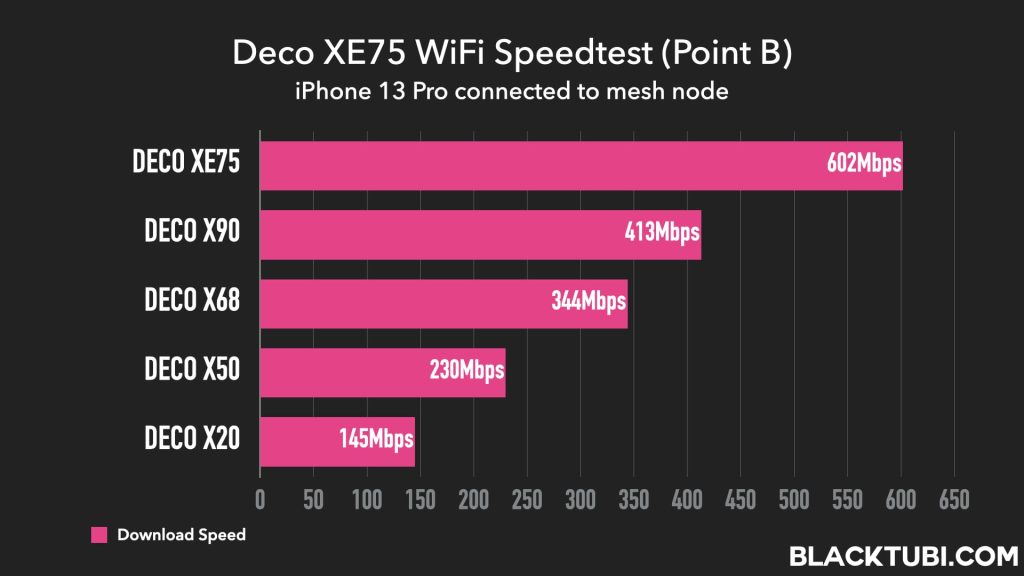
When connected to the mesh node after 2 walls to the main Deco unit, the Deco XE75 outperforms even the Deco X90 significantly. The new 6GHz is just so much more efficient resulting is a much faster speed for the Deco XE75.
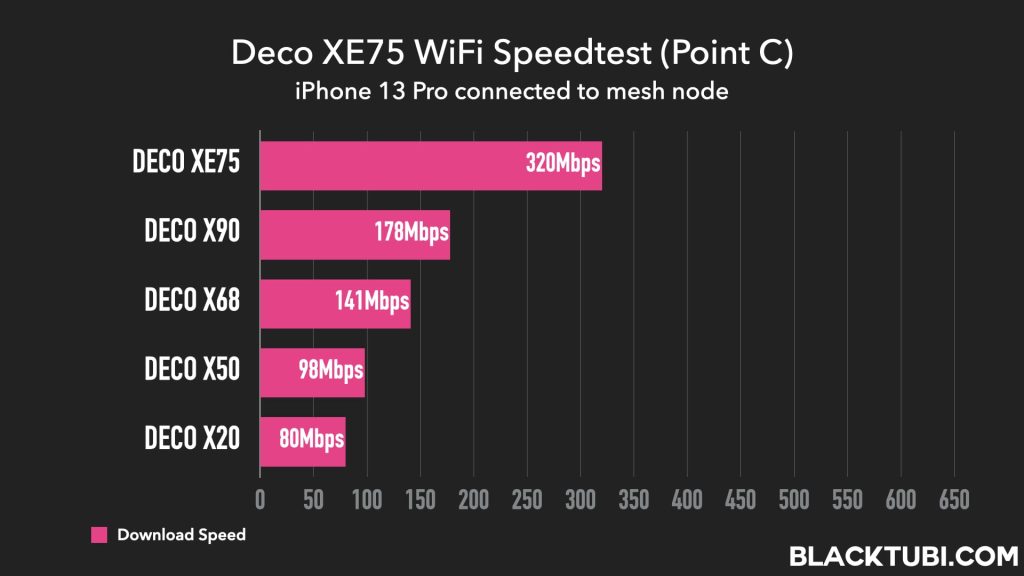
The next location is really testing the limit of the system as it is 2 walls after the mesh node in total of 4 walls to the main unit. The Deco XE75 still showing a significant lead over the Deco X90 which really surprised us. While it is strange, the performance is replicable even after several test.
Seamless Fast Roaming
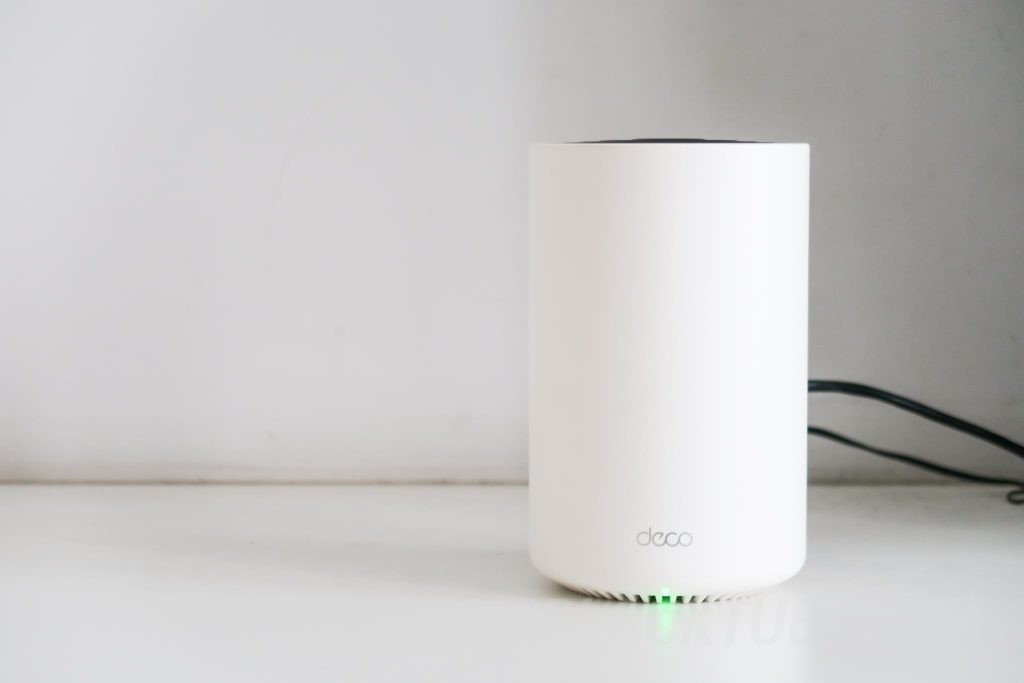
The roaming capability is one of the strongest selling points of TP-Link Deco Mesh WiFi System. Deco XE75 comes with 802.11k/v/r fast roaming technology with AI-Driven roaming algorithm. There will be just one Wi-Fi name on the entire mesh WiFi network so no manual switching is required.
When testing it on my mobile phone, I do not notice any freezes or dropouts even when I am walking around in my home. The Deco mesh technology will automatically switches my device to the best network as I am moving across different area in my property.
Deco App and Features
TP-Link Deco app is well designed and greatly enhanced the user-experience of the Deco Mesh Wi-Fi system. TP-Link also provided really good step-by-step videos on how to setup the system. Also worth mentioning that the Deco XE75 will support all Internet services in Malaysia.
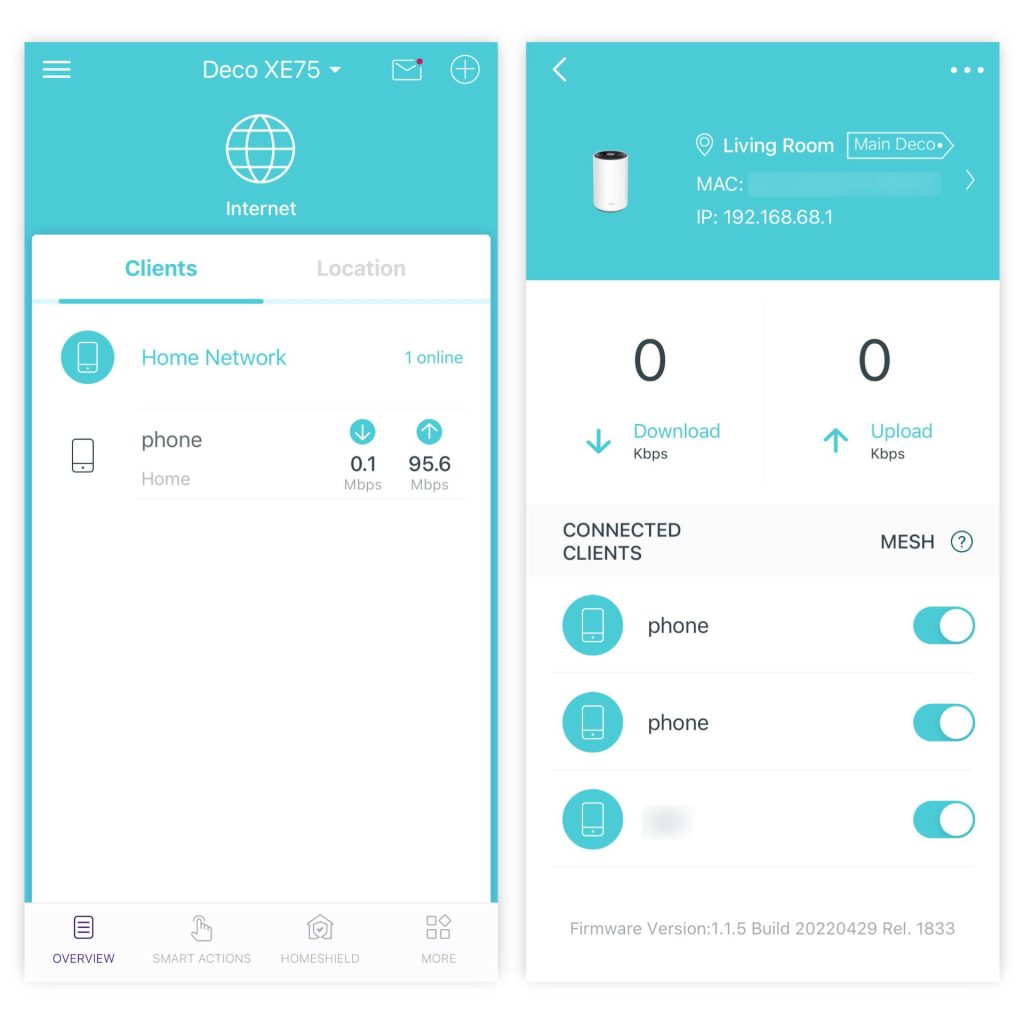
The app is very user-friendly and it will show the usual things like the list of connected devices, network status for each device their current network speed. The system also comes with some advanced features such as DDNS, port forwarding, static IP lease, VLAN IPTV and more.
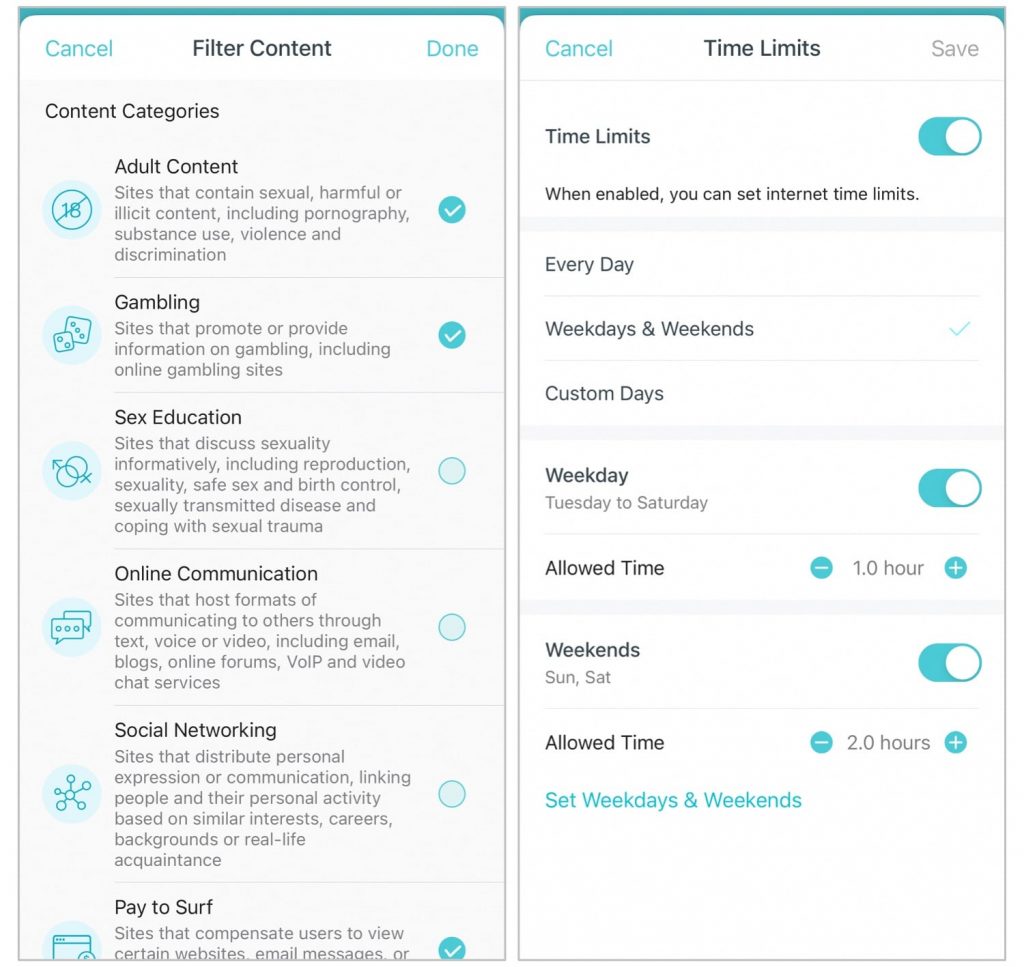
For those looking for more control over their family members, the HomeShield parental control service offers per device content filtering and usage limitation. This feature is very robust and offers a rather comprehensive content filtration policy for your family.
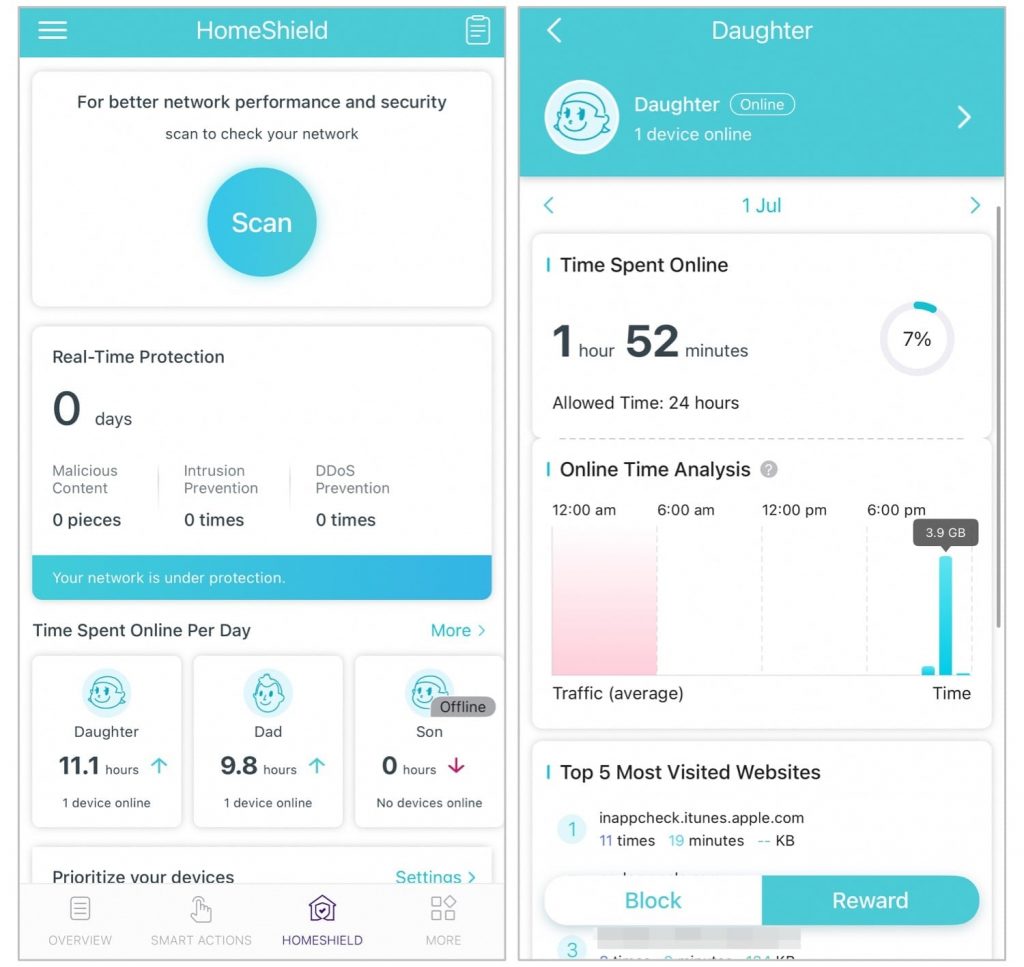
TP-Link is also selling a Pro tier which require a monthly subscription where it adds more features such as detailed reporting and more granular customization. However, I reckon the basic tier is more than enough for most customers as it included the content filtering software for all devices.
TP-Link’s HomeShield software suite built-in to the Deco XE75 also included a firewall feature which can block harmful websites from the network. The Deco XE75 also supported the latest WPA3 Wi-Fi security on all 3 bands of the mesh Wi-Fi network.
Closing Thoughts
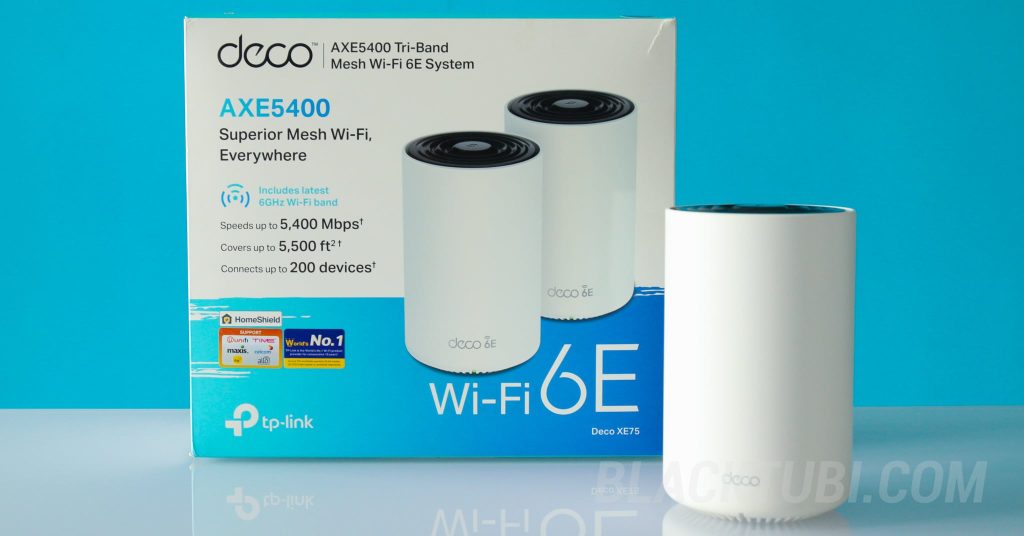
For just RM1499, the Deco XE75 is now TP-Link’s fastest mesh WiFi system with Wi-Fi 6E technology and the new 6GHz band. While being cheaper than competing older WiFi 6 flagship mesh WiFi systems in the market, the Deco XE75 offers a similar if not greater performance than the competitors.
That itself would be a really huge selling point for the Deco XE75. The software is also well optimized to make full potential of the hardware resulting in a seamless experience. TP-Link also listened to the customers and finally adding more ports to the Deco system which is really helpful.
If you are still using a Wi-Fi 5 (Wireless AC) mesh WiFi system, the Deco XE75 is a huge upgrade in performance. The smoothness and speed boost is instantly noticeable on day to day usage. It’s also a future proof product with the 6GHz band ready for future devices that require faster speed.
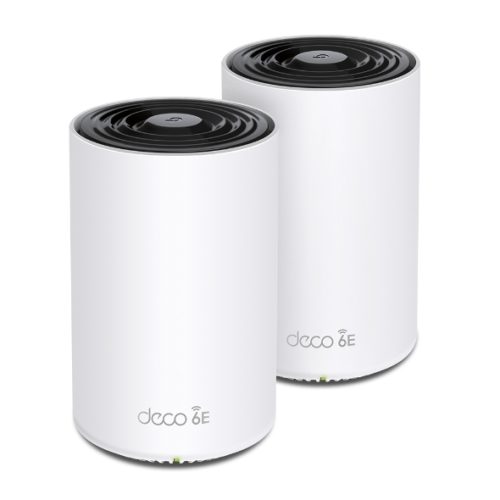
TP-Link Deco XE75
9.2
Tubi Rating
pros
- 3 Gigabit LAN/WAN on each unit
- Very fast system performance with Wi-Fi 6E 6GHz dedicated backhaul
- Minimalistic design
cons
- Monthly subscription required to get more features from HomeShield Pro

Hello Blacktubi.
On Unifi 500Mbps biz plan. Currently having it at our 4 storey linked factory, with 2 PCs & 1 copier on LAN cable)
If we were to have next 2 adjoining units to use the same network, 10-12 units of deco m9 plus with all Ethernet backhaul, enough to do the job? Targeting to reach average 300Mbps for PCs inside the next 2 units of factory ( total 10 units of PC, 2 units of copier with LAN cable)
If everything is Ethernet backhaul, I will recommend buying the Deco X20 or X50 instead. It’s a newer model with better feature. Tri-band is only beneficial when you are using wireless backhaul.
Hey blacktubi.
I am currently using Unifi 500Mbps.
My house is double storey around 2500 ft.
Should I go for this or just pick the Mercusys MR80X?
I need to maximize my internet either wireless or wired.
Can you help me with this one?
I will recommend the Deco XE75 instead. While the Mercusys MR80X can support 500Mbps easily when you’re near to the router, it doesn’t have enough 5GHz coverage to provide high speed WiFi after 2 walls. However, the Deco XE75 should be able to provide 500Mbps for almost your entire home.
So, is it better for me to make it wired or wireless backhaul?
Also, between mix the 5Ghz and 2.4Ghz or separate it, which 1 will you prefer?
Always use wired backhaul whenever possible. Wired will always be faster than Wireless.
I suggest combining them.
Hi, I’m currently using Deco M9 Plus for 500mbps unifi speed, is this a good upgrade from the M9 Plus? Currently only getting 200-300+ mbps at the moment…
Thanks!
Yes, the Deco XE75 will bring it to full speed for the whole network.
Hi, may I know if xe75 can configure for maxis fiber voip?
My house is double storey around 2000 ft. I am comparing tplink deco xe75 and asus zenwifi xt8 now, which one you think is better and suitable?
Thank you very much
Unfortunately, I don’t think TP-Link products can support Maxis VoIP service. Maxis VoIP service only works with their own router.
What is the impact that it doesn’t support 2.5G LAN/WAN?
Unless you will be getting a 2Gbps Internet connection soon, else don’t be bothered by it.
I’m currently using a m9+ and using lan to connect it to my pc like a powerline. But i could not get the full speed out of it. What is your suggestion? Is TP-Link Deco XE75 better? What are other option?
I think the Deco M9 Plus is only good for up to 200-300Mbps. The Deco XE75 is good for 500-600Mbps.
is your iPhone connected to the 6GHz band? as it is used as the backhaul for the mesh network. if yes, which 6GHz frequency is being used as there are 7 separate bands in the 6GHz spectrum.
iPhone does not support 6GHz at the moment. I am only connected to the 5GHz band on my iPhone. However, TP-Link does allow the 6GHz band to work concurrently as the backhaul and fronthaul network with a manual toggle in the Deco app.
Has Malaysia open up 6Ghz for consumer usage? I’m using Deco X20 with Ethernet backhaul with 300Mbps plan. Would you think is there a need to switch to XE75 since the price is still sky high for normal consumer?
Yes 6GHz is already approved for public use in Malaysia. Since you already have Ethernet backhaul and Deco X20 should be perfectly sufficient for the 300Mbps speed.
XE75 don’t have Wan port mean it cannot directly use to connect with unifi btu modem right?
It comes with 3 Ethernet ports and the system will automatically detect which one is connected to your modem and designate it as the WAN port.
Hi How is this compared to ASUS AX XT8 and RT-AX92U?
House is double story with a build up area of around 6000 sq ft
Thanks
Definitely faster than the RT-AX92U but it should be a tie with the ASUS ZenWiFi XT8.
thanks
Great Review!!
My house has two floors with a total of 5500 ft², I currently have 3 m5 deco units with few blind spots and I can’t get maximum speed of our contracted bandwidth in all rooms. in order to improve the signal and upgrade to wifi 6 technology, I would like to know which deco model would best suit me, would deco xe75 be a good choice?
Thanks.
The Deco XE75 is a really great product from TP-Link. I highly recommend using it to replace your current Deco M5 system. The performance is several times faster than Deco M5.
hi Blacktubi,
Deco Xe75 vs ASUS ZenWiFi XD6
which is better or do you have better recommendation for
1. 3 storey house
2. placement of the nodes/router
3. budget < RM2000
The Deco XE75 is faster than ASUS ZenWiFi XD6 but it is more expensive. Deco simplifies everything while ASUS provides more control, you can pick what you prefer. Ideally, it’s better to have one unit on each floor. However, if the third floor is rarely used or not important, you can get away with twin pack. Do expect speed to be slower on the floor without a mesh node.
thanks @blacktubi.
if there is wired cable available on each floor. which model will be good that can tap into using wired as the backhaul ?
putting 1 at 3rd floor and 1 at GF will be ideal then. right?
Yup, ideally it should be able to cover the middle floor as well if your property land area is not too large.